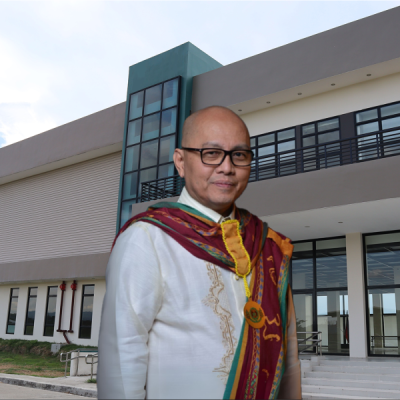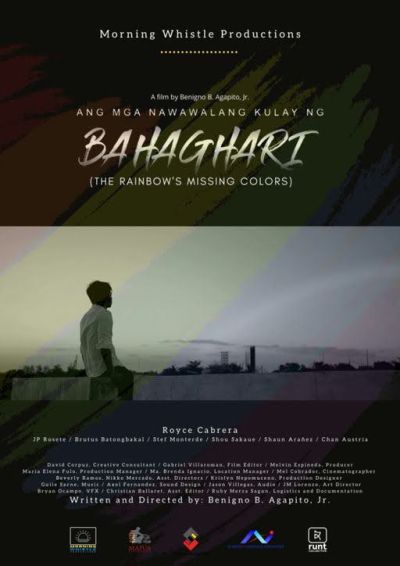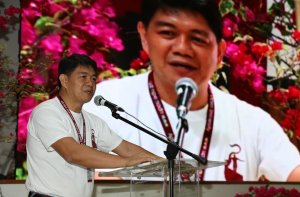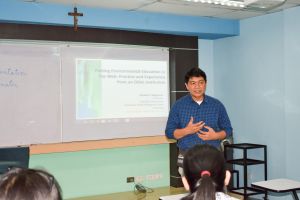In observance of the International Day of Peace and the UP Day of Remembrance on 21 September 2025, we share faculty members’ perspectives on peace — its importance and how it shapes their work. In this piece, Assistant Professor Benigno B. Agapito Jr. of the Faculty of Information and Communication Studies shares his insights on the power of film in sparking discussions on addressing challenges to genuine peace.
In the closing scene of the Mike de Leon film Sister Stella L, the character played by actress Vilma Santos, with the camera fixed on her face, delivers these lines:
“May konting nadagdagan sa kaalaman, at pag-unawa pero patuloy na nagaaral at natututo. Hindi nanonood na lamang. Kundi nakikiisa sa pagdurusa ng mga di makaimik…Tumutulong sa abot nang aking makakaya.”

Last scene from Sister Stella L. (1984) directed by Mike de Leon
What is Peace to a Visual Artist?
According to Dr. Benigno B. Agapaito Jr., the said film reflects the power of visual storytelling in mirroring social realities and creating spaces for conversations around social issues that impede the attainment of genuine peace. Dr. Agapito is an Assistant Professor in Media Studies, Visual and Creative Communication at the Faculty of Information and Communication Studies, UP Open University. He is also a filmmaker, journalist, and creative writer known for his innovative approach to education and the arts.
“As a filmmaker and a multimedia artist,” Dr. Agapito said, “I see peace not just as the absence of war or conflict, but as a form of harmonious connections among various elements of a creative work. It happens when there is no mix-up, overstatement, or clash of ideas that can distort the essence of the narratives. In art, conflict emerges when elements do not connect.”
He draws a parallel between this artistic perspective and society itself. “In society, it happens when individuals or groups cannot find shared ground in their viewpoints and perspectives. Social conflict is more than a simple disagreement. It is a struggle for acceptance, a clash of ideals, and the denial of views to align,” he explained.
Dr. Agapito believes that disagreement should not be feared but embraced as an opportunity to create meaning. Just as disorder in art can be transformed into coherence and beauty, social conflict can be resolved through negotiation and reconciliation toward a shared vision. In this sense, he said, “both art and society remind us that the true meaning of peace lies in our capability and proficiency to connect differences into a more constructive and beneficial whole.”
Dr. Agapito noted that film as an art form, can reach a wide audience, making it a powerful medium for presenting social realities, cultural meanings and political experiences. Through these images, viewers can be inspired to actively engage in addressing obstacles to achieving peace.

Dr. Benigno Agapito, Assistant Professor at the Faculty of Information and Communication Studies, is also a filmmaker, journalist, and creative writer.
In the film Sister Stella L., the nun portrayed by the film, Ms. Vilma Santos, is an advocate of social justice and peace. Dr. Agapito explained that the film narrative shows that abuse and corruption would only extend the cycle of violence and that the true meaning of peace can be achieved through social action just as the lead character did in the story
Addressing Violence in Films
While film has been described as a tool for promoting peace, others view it as contributing to the glorification of violence. As a filmmaker and multimedia artist, Dr. Agapito recognizes the influence of film on how people perceive violence or aggression. What matters more is the intent behind the depiction of violence. “Some films highlight violence to catch attention and to entertain the audience, while others use it to tell real stories, incite opinion, or maybe to raise awareness about social conflicts. “The power of visual storytelling particularly on film lies in its ability to influence people, sometimes it agitates, but sometimes it enlightens,” he said. In the end, it is the viewer’s viewpoint that defines how the film is understood, making the film a personal experience.
When tackling themes of violence in his films, Dr. Agapito prefers to show how violence affects people and its meaning in society rather than depicting it as mere spectacle. “For me, filmmaking is not just about telling a story, it is also about making sense of painful experiences and turning them into something others can reflect on.”
In his film “Ang Mga Nawawalang Kulay ng Bahaghari,” Dr. Agapito drew from his experience of joining a university fraternity, where he confronted the weight of violence in a homosocial environment. He realized that it was not just about mental pressure but also silencing, exclusion, and the pressure to conform. “I used the film to process these experiences, and translate them into images, colors, and symbols that expressed how identity can be erased but also reclaimed. What matters to me most is staying true to that reality without exploiting it. I wanted it to carry a sense of hope that even in the loss of colors, there is always the possibility of finding them again.”

Agapito’s short film portrays the lived experience of a gay student navigating fraternity life
Hope for Peace
When asked about his hope for the country’s journey toward peace, he looks forward to all government officials upholding the true meaning of public service and serving the people with integrity and accountability. He said, “Genuine peace can never be achieved in a society weakened by corruption. Peace will take shape when leaders live with honesty, stand firm for social justice, and put the people’s welfare above their own interests.”
Art and Life truly mirror each other. Through the power of the narrative and their mass appeal, films can show social, political, and cultural realities often overlooked in daily life. When done properly, they can educate and provide a platform for people to understand their present condition and make informed choices in the world they live in.
Written by Dr. Primo Garcia











